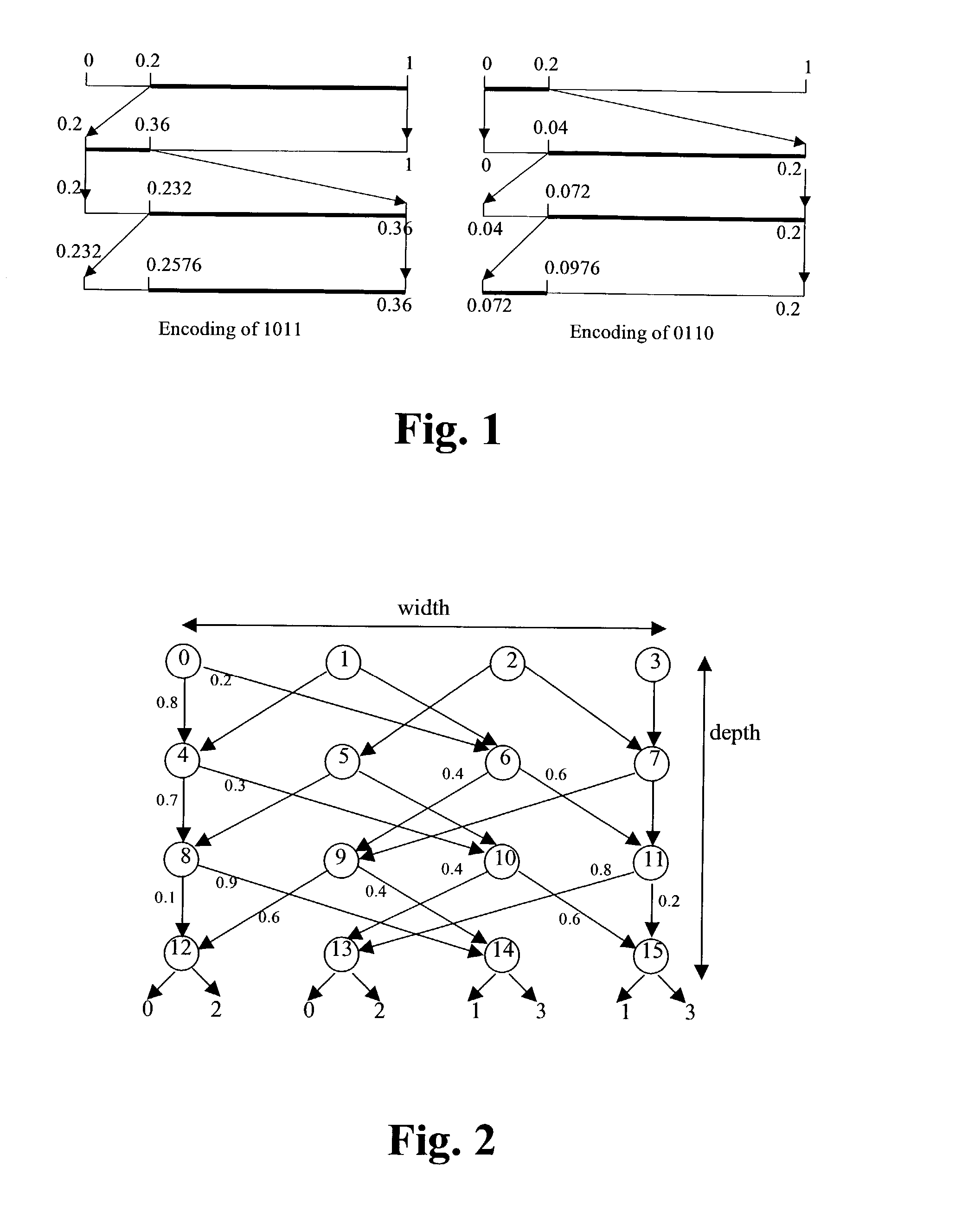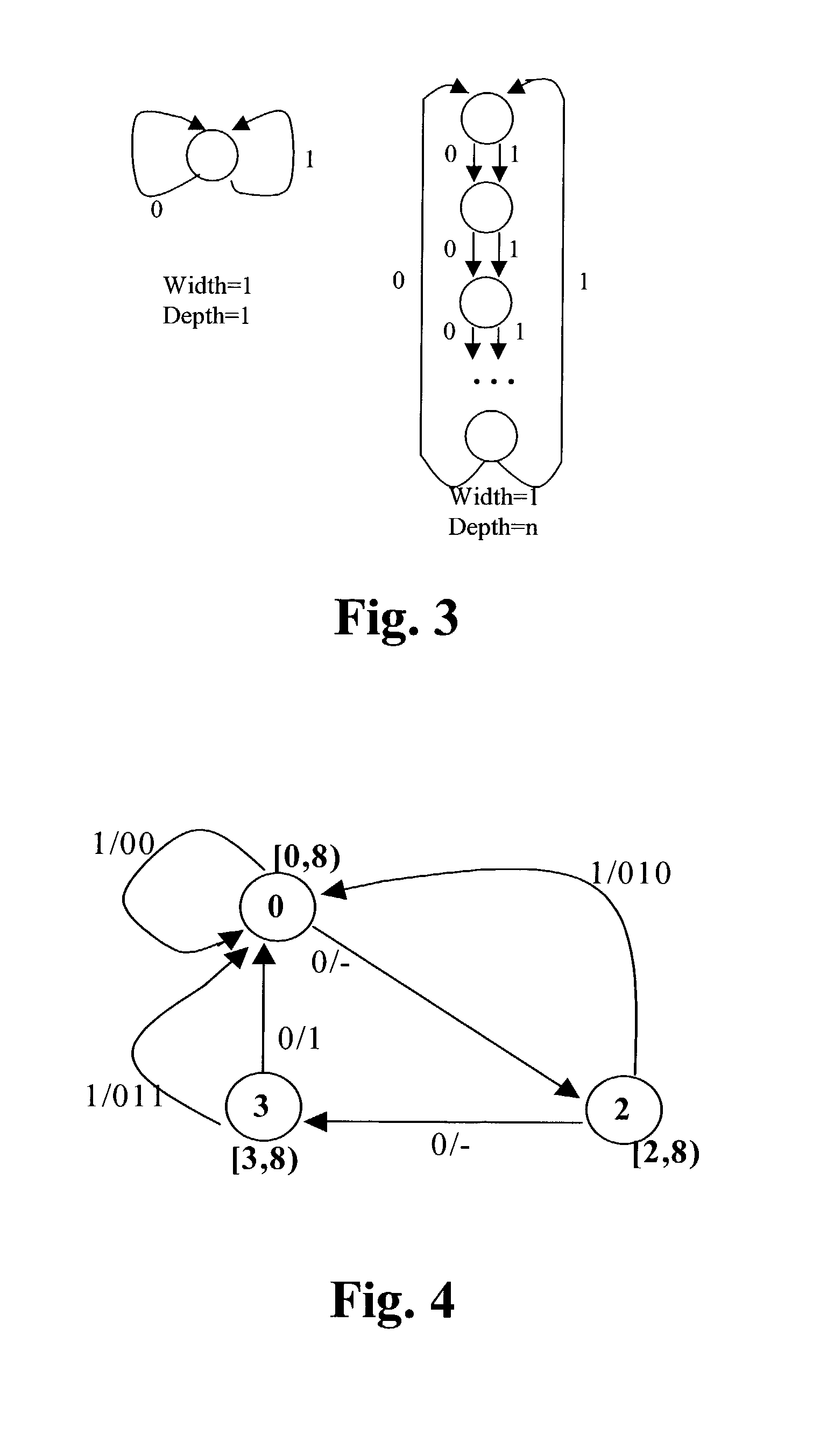Code compression algorithms and architectures for embedded systems
a code compression and embedded system technology, applied in the direction of code conversion, electrical equipment, etc., can solve the problems of complex design of decompression units and large size of static models, and achieve the effect of reducing bus power consumption and minimizing the total bus toggles
- Summary
- Abstract
- Description
- Claims
- Application Information
AI Technical Summary
Benefits of technology
Problems solved by technology
Method used
Image
Examples
Embodiment Construction
[0056]Previous work using dictionary-based methods of code compression assume that VLIW (Very Long Instruction Word) instructions have restricted format, where instruction positions within a long instruction word correspond to specific functional units. Modern VLIW architectures use flexible instruction formats, thereby requiring code compression approaches other than dictionary-based compression algorithms.
[0057]The code compression schemes of the present invention are capable of compressing flexible instruction formats, where any functional unit can be used for any position in the instruction word. Methods are demonstrated using TMS320C6x and IA-64 architectures.
1.0 Fixed-To-Variable Code Compression (F2VCC)
[0058]This section describes code compression schemes using fixed-to-variable length coding based on a reduced precision arithmetic coding algorithm. Decompression architecture design is presented, allowing for parallel and multi-bit decompression, with implementation in TSMC 0...
PUM
 Login to View More
Login to View More Abstract
Description
Claims
Application Information
 Login to View More
Login to View More - R&D
- Intellectual Property
- Life Sciences
- Materials
- Tech Scout
- Unparalleled Data Quality
- Higher Quality Content
- 60% Fewer Hallucinations
Browse by: Latest US Patents, China's latest patents, Technical Efficacy Thesaurus, Application Domain, Technology Topic, Popular Technical Reports.
© 2025 PatSnap. All rights reserved.Legal|Privacy policy|Modern Slavery Act Transparency Statement|Sitemap|About US| Contact US: help@patsnap.com



